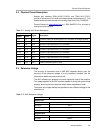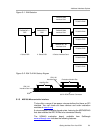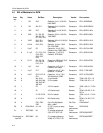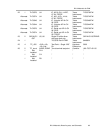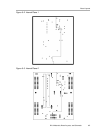
Additional Hardware Options
5-2
5.1 Additional Hardware Options
In general there are three hardware directions that the user can take with the
EVM.
5.1.1 Stand-Alone EVM
The EVM can be used on its own. Using the EVM in this manner obliges the
user to provide a custom digital interface between the EVM and a host system.
Users are entirely responsible for ensuring proper timing requirements are met
in addition to providing any glue logic necessary. Users must also provide the
necessary analog interface and supply power to the EVM.
5.1.2 DSP Interface
Depending upon the DSP that the user chooses, there are a number of TI
DSKs available. DSKs are D
SP Starter Kits, and provide users with a DSP
starter system. They contain all the necessary hardware and software to
quickly begin prototype construction.
For example, the TMS320C6711 DSP starter kit includes the DSK hardware,
a parallel port cable to connect to a PC, a 5-V universal power supply, and a
Code Composer Studio CD-ROM containing all the necessary software.
Each family of DSKs provides different physical interface options. These
interface options enable address, data, and control signals to be decoded and
used by mezzanine-level cards (such as EVMs).
To connect this EVM to any DSK requires selection of the correct interface
card. Generally the procedure is outlined below.
- Select the DSP you wish to use.
- Select the appropriate DSK.
- Select the suitable interface card.
As an example, assume that the user wishes to use the TLC3578 EVM with
the TMS320C6711 DSP, the steps that should be taken are shown below
following a side-elevation of the boards required.




